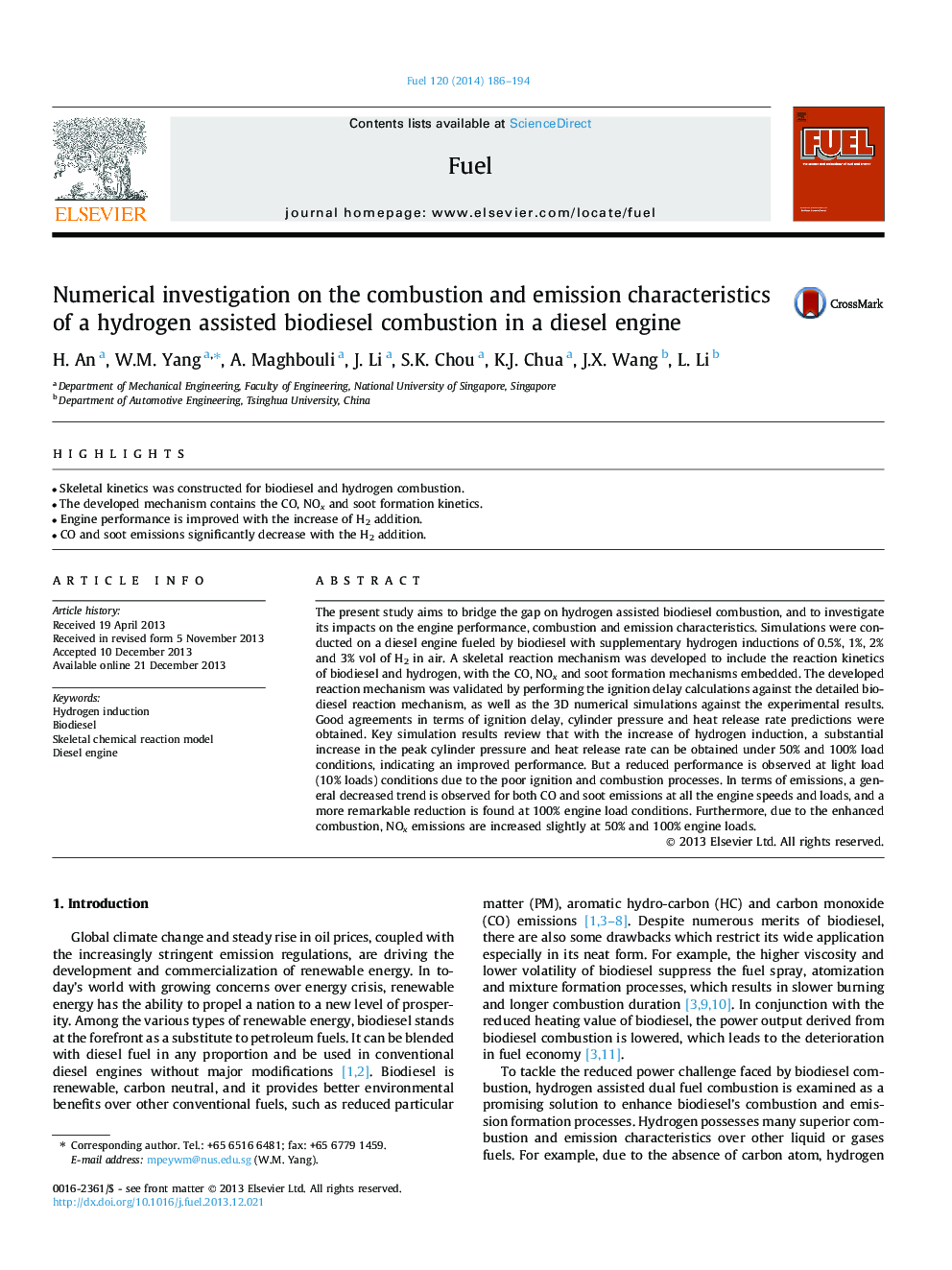| Article ID | Journal | Published Year | Pages | File Type |
|---|---|---|---|---|
| 206174 | Fuel | 2014 | 9 Pages |
•Skeletal kinetics was constructed for biodiesel and hydrogen combustion.•The developed mechanism contains the CO, NOx and soot formation kinetics.•Engine performance is improved with the increase of H2 addition.•CO and soot emissions significantly decrease with the H2 addition.
The present study aims to bridge the gap on hydrogen assisted biodiesel combustion, and to investigate its impacts on the engine performance, combustion and emission characteristics. Simulations were conducted on a diesel engine fueled by biodiesel with supplementary hydrogen inductions of 0.5%, 1%, 2% and 3% vol of H2 in air. A skeletal reaction mechanism was developed to include the reaction kinetics of biodiesel and hydrogen, with the CO, NOx and soot formation mechanisms embedded. The developed reaction mechanism was validated by performing the ignition delay calculations against the detailed biodiesel reaction mechanism, as well as the 3D numerical simulations against the experimental results. Good agreements in terms of ignition delay, cylinder pressure and heat release rate predictions were obtained. Key simulation results review that with the increase of hydrogen induction, a substantial increase in the peak cylinder pressure and heat release rate can be obtained under 50% and 100% load conditions, indicating an improved performance. But a reduced performance is observed at light load (10% loads) conditions due to the poor ignition and combustion processes. In terms of emissions, a general decreased trend is observed for both CO and soot emissions at all the engine speeds and loads, and a more remarkable reduction is found at 100% engine load conditions. Furthermore, due to the enhanced combustion, NOx emissions are increased slightly at 50% and 100% engine loads.
